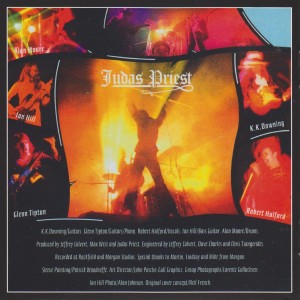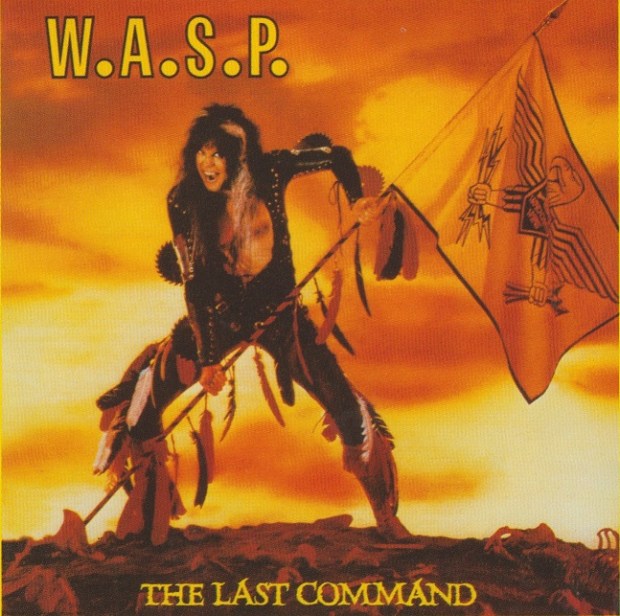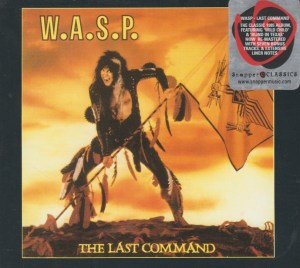I was listening to Sad Wings of Destiny recently and wrote up a brand new review before realizing I already reviewed it. Fortunately, I had lots more to say. For my original 2015 review, click here.
 JUDAS PRIEST – Sad Wings of Destiny (1976 Gull, 1998 Snapper Music)
JUDAS PRIEST – Sad Wings of Destiny (1976 Gull, 1998 Snapper Music)
1974’s Rocka Rolla didn’t set the world on fire, so back to the drawing board for album #2. Having rid themselves of most of their early bluesy material, Judas Priest went heavier, and more diverse simultaneously. The resulting album, 1976’s Sad Wings of Destiny, is considered an early classic by the band. Some feel they rarely reached these heights again as they took their metal more mainstream in the 80s.
“Victim of Changes”, which opens the album, introduced the world to the high notes that Rob Halford was able to hit. “Whiskey woman don’t you know that you are driving me insaaaaaaaaaaaaaane!” Yet that note is nothing compared with Rob’s final shrieks. This track combines an earlier unreleased Priest song titled “Whiskey Woman” written by original singer Al Atkins with a track called “Red Light Lady” brought in by Halford from his old band Hiroshima. You can hear the moment the two songs are welded together at around the 4:45 mark. Together at almost eight minutes they form a complex, classic Priest track that represents a high water mark. Twisting from a metal groove into ballady territor-y and back again, this is drama the way Priest do it. And they never do it better.
“The Ripper” boasts similar high notes but it’s almost a parody. This riff-based shorty (2:51) is from the perspective of Jack the Ripper (or if you like, Jack the Knife). With a galloping beat from new drummer Alan Moore (who was eventually replaced by the far superior Les Binks), “The Ripper” is as metal as things got in 1976. Its placement as second track is perfect because the next two, “Dreamer Deceiver” and “Deceiver” form a single 8:34 epic. “Dreamer Deceiver”, which forms the majority of the song, is an epic ballad about a supernatural being who tempts those below.
“Saw a figure floating, ‘neath the willow trees.
Asked us if we were happy, we said we didn’t know.
Took us by the hand and up we go.”
They follow the dreamer through the purple hazy clouds into the cosmos. The intricate acoustic guitars let Rob Halford dominate with his story. Though the track is haunting, it seems the people in the song find “complete contentment” and live without worries. But as the song builds, adding piano, Rob’s vocals become more urgent (and high). Though it seems like a heavenly paradise, the second part “Deceiver” changes the mood considerably.
“Solar winds are blowing, neutron star controlling.
All is lost, doomed and tossed, at what cost forever?”
There is always a price when temptations seem too good to be true. This song brings another heavy gallop, the kind which Iron Maiden would later perfect. Solos blast, as Halford warns us all of the “Deceiver”! This is the kind of metal that people associate with Judas Priest, though its’ far more impressive if you consider it part of a larger composition.
Side one can be viewed as just three songs: two epics and a hard rocker. Side two has more to offer, though it opens in epic enough quality. Glenn Tipton’s piano piece “Prelude” is foreboding. As a Sabbath-like instrumental, it serves to set the scene for “Tyrant” (though “Tyrant” is always performed live without “Prelude”). Overdubbed vocals make for a cool chorus, but this one is just a molten metal burner. It wastes no time in laying waste, with guitar solos galore, in both single and dual formations.
“Genocide” is a slower, cooler groove that doesn’t seem to match its violent title. But this is from the perspective of a survivor. “Save me, my people have died, total genocide.” This is the song that gave us the next album title, Sin After Sin: “Sin after sin, I have endured, but the wounds I bear are the wounds of love.” Cool track and a necessary one to give the album balance. Songs of this tempo and style would make up the bulk for Priest albums in the future, yet it’s not simple or blockheaded like some 80s Priest tended to be. It retains some complexity and traverses multiple musical landscapes through its length.
Next: a complete left turn. “Epitaph” (written by Tipton) is a piano-based funeral dirge that sounds a heck of a lot like Queen. It’s beautiful though. With Halford’s vocals layered as a choir, it’s a daring change of pace even though Queen were pretty much the biggest band in the world in 1976.
“Epitaph” fades directly into the final track “Island of Domination”, another metal chug but with an apocalyptic bent. Rob’s lyrics are unusually styled with archaic sounding lines like “‘Twas as if all hell had broke loose on this night.” This could be Rob’s first BDSM-themed song with lines like “Lashings of strappings with beatings competing to win.” If not, then it’s just a brutal battle set to the tune of speedy Priest metal.
It must be said that Sad Wings has a striking album cover, with the angel depicted burning in hell. School teachers worldwide would have loved this cover back in 1976. The angel character would return 14 years later as the Painkilller. The “devil’s tuning fork” necklace that the angel is wearing would become Priest’s symbol on later albums as well.
Though Sad Wings is an essential album for a serious metal collection, and stuffed full with riff after riff of majesty, it is frustrating hard to find good versions on CD. Priest’s albums on Gull records have never been officially reissued by the band. The 1998 CD release by Snapper music is usually rated fairly well. If you’re unsure then get an original Gull vinyl copy. But do get Sad Wings of Destiny and prepare to hear a young, vital and daring Judas Priest just beginning to learn what they can do.
5/5 stars







